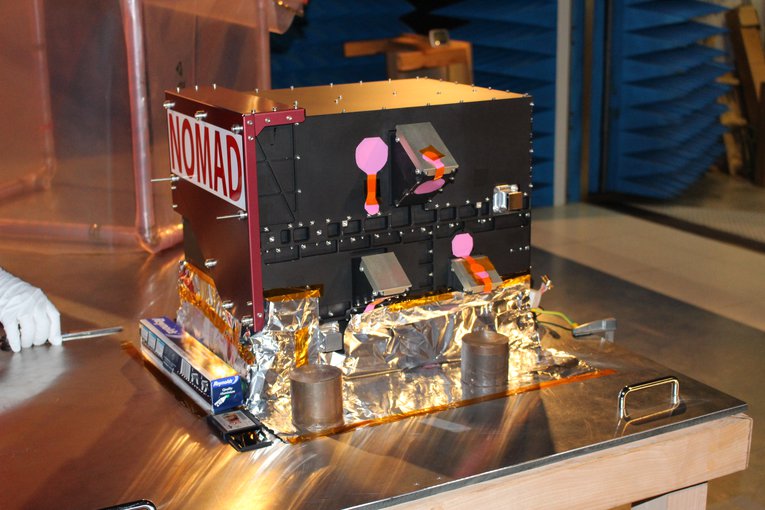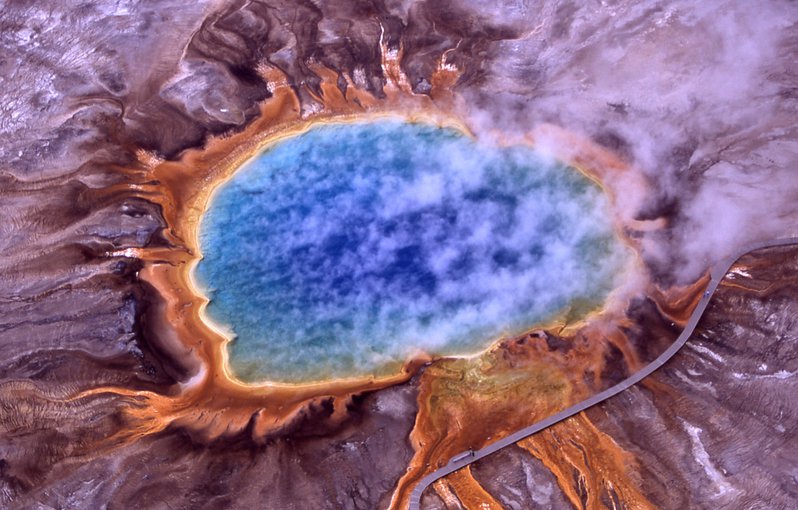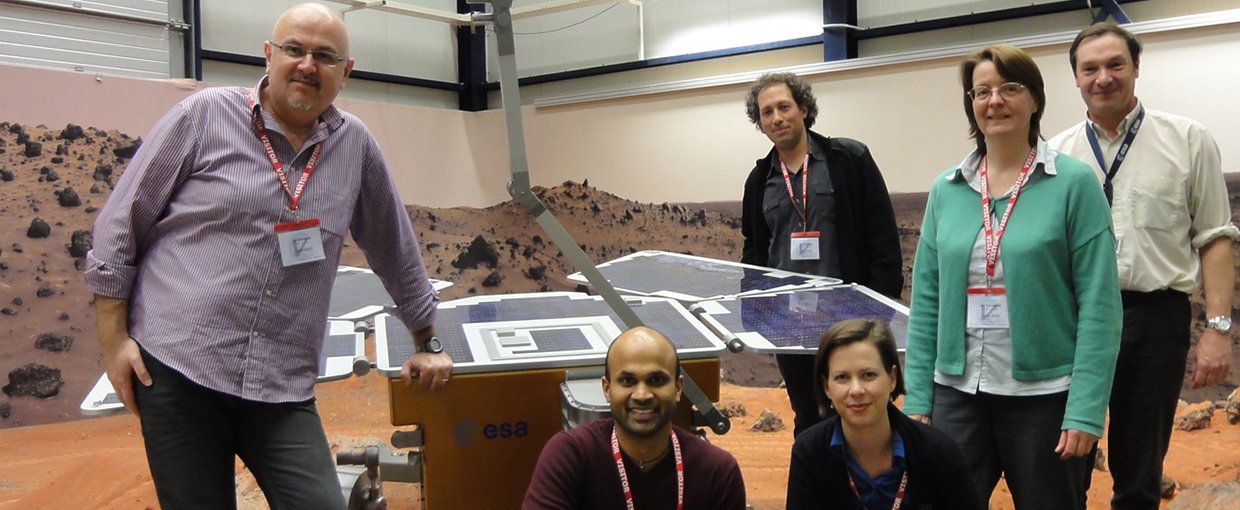Written bySarah Wild

In space exploration, everything is bigger: the scale, the budgets and even the distance between researchers. The members of the Astrobiology Society of Britain (ASB) are thousands of miles away from many of their collaborators, such as those at NASA, but scientists on both sides of the Atlantic Ocean maintain that diverse collaborations improve the quality of the science – and, ultimately, our understanding of the Universe.
The ASB, established in 2003, brings together scientists and academics interested in how life could exist in the cosmic environment.
Traditional scientific disciplines – which push research into clearly defined categories – struggle to cope with a field as unwieldy as astrobiology. The Universe, on the other hand, doesn’t recognize narrow silos like biology or physics or chemistry, says Charles Cockell, director of the United Kingdom Centre for Astrobiology and founder of the ABS.
“They are human definitions. Astrobiology gets astronomers, biologists, and Earth scientists together in a way that few other things do,” Cockell says. “Before astrobiology came along, physicists didn’t talk to biologists. There weren’t mechanisms to do that.”

Manish Patel and the NOMAD science team with a prototype of the ExoMars rover in the Mars Yard at ESTEC in the Netherlands.Image credit: Royal Belgian Institute for Space Aeronomy.
That is what the ASB aims to do: bring together a community of researchers interested in the relationship between life and the cosmic environment. Every two years the society, which is the only one of its kind in the United Kingdom, holds a conference to encourage researchers to present their work and start talking to each other.
“For a field like astrobiology, which is very interdisciplinary, connecting with people in different disciplines can be challenging,” says Jack O’Malley-James, an astrobiologist at the Carl Sagan Institute in New York and a committee member of the ASB. “The ASB acts as an umbrella organization that makes that process easier – through our online activities, and the meetings and workshops we organize – than it otherwise would be.”
There are practical difficulties for researchers who are interested in a multidisciplinary field like astrobiology, O’Malley-James says. “A researcher with a physics background, for example, is less likely to be aware of microbiology news and events and may not necessarily know where to look for that information. By collating this information, we make it easier for the astrobiology community to be more aware of developments across the field.”
And the same holds true for those trying to collaborate with colleagues in different countries. The ASB is a link to other international organizations, such as the European Space Agency, NASA, the Canadian Astrobiology Network, and the European Astrobiology Network Association.
International Collaboration
ASB chair Manish Patel, an astrobiologist at the Open University, says that collaboration is “vital, essential, in my work”. As we explore the Solar System in ever more detail, and learn more about exoplanets, a combination of disciplines, ranging from the pure sciences to engineering, philosophy and the arts are required in order to answer the questions that our exploration brings about. “The aim of the ASB is to bring people [from different disciplines] together to allow these kinds of collaborations to start and grow.”

Dr Manish Patel of the Open University, and chair of the Astrobiology Society of Britain.Image credit: Open University.
Patel is collaborating on the NOMAD instrument, also known as the Nadir and Occultation for MArs Discovery, on board the European Space Agency’s ExoMars Trace Gas Orbiter. NOMAD, which is equipped with three spectrometers, can analyze the way in which sunlight interacts with the Martian atmosphere, and ultimately determine what gases are present and where they are.
“It is impossible to build an instrument like NOMAD in isolation,” says Patel, who is a co-principal investigator on the project. His research focus is on detecting gases such as methane, which could point to current or past life on the red planet.
Projects like NOMAD are ambitious – too ambitious for most institutions or countries to do on its own. “You need skills and capabilities from a wide range of places, and you need science expertise from a diverse set of people to get the most out of it. Not to mention funding from lots of partners, it is not cheap!” Patel says.
“Each partner takes responsibility for a different part or aspect of the instrument, and it all has to come together in a coherent manner, which is a challenge. But this enables a large, diverse team, and gives many different viewpoints, which is exactly what you need to solve the technical problems encountered in building a spaceflight instrument, and to solve the science questions posed by the data that is returned.”
There are numerous examples of collaboration between the two countries due to many shared astrobiology research interests.
“There’s a fair amount of overlap,” says O’Malley-James, who plans to return to the United Kingdom in the near future. Particular areas of overlap include “microbiology research into how life can live in extreme environments and how this relates to the habitability of planets like Mars; and exoplanet detection and habitable zone exoplanet climate modeling.”

The NOMAD instrument, which is on board the European Space Agency's ExoMars Trace Gas Orbiter and will search for specific gases in the Martian atmosphere, such as methane, which be produced by life.Image credit: Royal Belgian Institute for Space Aeronomy/OIP Sensor Systems/University of Liège..
Diverse Research
ASB members’ research interests are as wide and varied as the field of astrobiology itself, says Lewis Dartnell, an astrobiologist at University College London who also holds a professorship in science communication at the University of Westminster.
“ASB members research everything from the chemical origins of life on Earth … [through to] the geological history of the earth and other planets,” he says, as well as the many facets of astrobiology in between. These include designing and building instruments for space probes to analyze planets from orbit or search for signs of life, as well as looking for extremophiles here on Earth. Extremophiles are the hardiest form of life we know of: these microorganisms live in environments that would be toxic for most life and can give researchers the outer limits of what life as we know it can endure – whether it is the sweltering radiation-bathed plains of the cold desert in Antarctica, or an asphalt lake in Trinidad.
In addition to the biennial conference which focuses on UK-involved astrobiology research, there are annual workshops for members and the society has a quarterly newsletter containing updates on all aspects of astrobiology, from scientific results through to upcoming conferences and the activities of local astrobiologists.

Extremophiles, such as the thermophiles that give the microbial mats such vivid colors in the hot springs in Yellowstone National Park, are a hot topic of study amongst astrobiologists in the UK.Image credit: Jim Peaco/National Park Service.
Outside of the science, ASB has another mandate: to take the United Kingdom public along with them on their journey into the cosmos.“The UK general public seems to be deeply interested in space exploration and the search for life beyond Earth,” says Dartnell.
“Astrobiology very neatly demonstrates how much of today’s cutting-edge science is interdisciplinary, and the possibility of life on other worlds is something that everyone has pondered or chatted about with their friends and family at some point.”
In the same way that astrobiology is not the sole province of physicists or biologists, neither is it reserved just for scientists — it is something that all humans are interested in.
International Partner Series:
Australian Center for Astrobiology
The UK Centre for Astrobiology
German Aerospace Center: Institute of Planetary Research
Spain’s Centro de Astrobiología
Sociedad Mexicana de Astrobiología (SOMA)
Related:
Astrobiology Society of Britain (ASB)
United Kingdom Centre for Astrobiology
Cockel et al. (2018) “The UK Centre for Astrobiology: A Virtual Astrobiology Centre. Accomplishments and Lessons Learned, 2011–2016,” Astrobiology, 128(2). DOI 10.1089/ast.2017.1713


